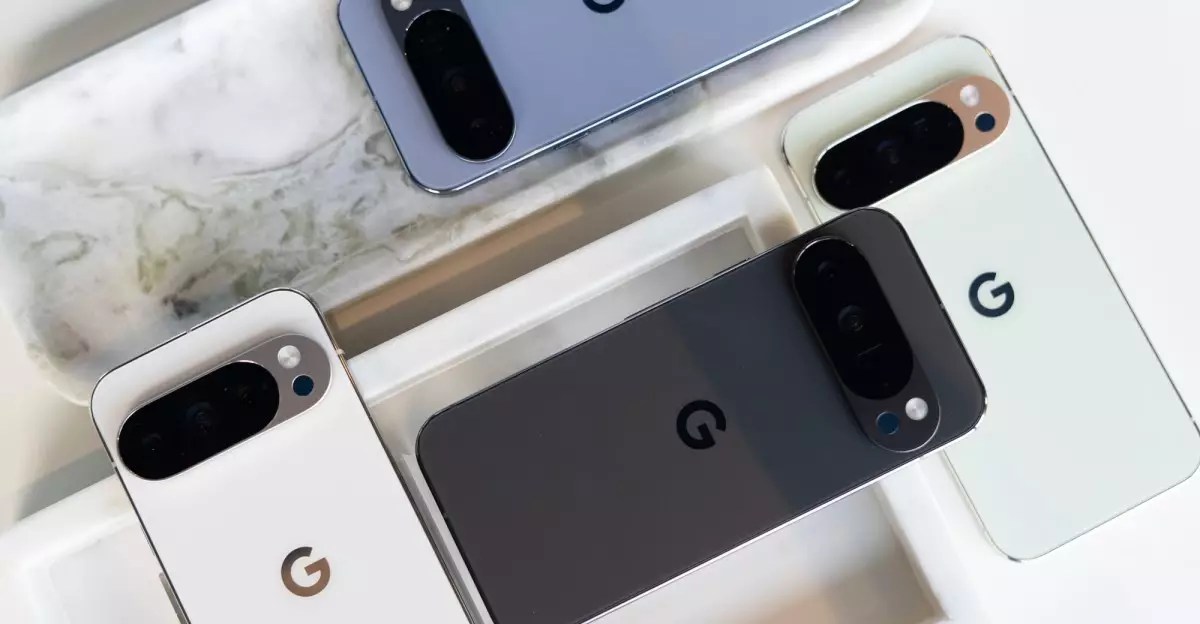Google’s recent launch of the Pixel 10 signals more than just an incremental update—it marks a substantial leap in how smartphones integrate seamlessly into our daily lives. The new Pixel 10 shares a striking resemblance to its predecessor, the Pixel 9, yet beneath the surface, Google has packed in features that redefine user expectations. At first glance, the similarity in design might suggest a lack of innovation, but a closer analysis reveals a deliberate evolution aimed at elevating convenience and functionality. Notably, the introduction of the Pixelsnap—a magnetic attachment system—embodies this philosophy, transforming the mundane act of accessory management into a fluid, intuitive experience. No longer bound by clumsy clamps or misaligned wireless chargers, users now enjoy a magnetic ecosystem that fosters spontaneous use and effortless customization. This feature, although seemingly minor, indicates Google’s shift toward embedding seamless lifestyle integration directly into hardware, a move that sets a new industry standard.
Transforming Photography: From Limitations to Possibilities
Perhaps the most compelling upgrade lies in the camera system. The Pixel 9’s omission of a telephoto lens was a glaring gap, especially for photography enthusiasts craving reach and clarity. Google has responded with a significant upgrade in the Pixel 10—the inclusion of a dedicated telephoto lens that promises to unlock new creative avenues. With this addition, capturing distant landscapes or refined portrait shots becomes more accessible, reducing reliance on digital zooms that often sacrifice quality. Although some camera specifications have slightly diminished in terms of megapixels—from a 50 MP main sensor in Pixel 9 to a 48 MP sensor in Pixel 10—the performance upgrade provided by the Tensor G5 chip offers a compelling counterbalance. Google’s emphasis on software advancements and computational photography suggests that image quality will not suffer despite the minor hardware downgrade. Instead, it hints at a future where AI-driven image processing will elevate what hardware alone can achieve.
Core Components and Strategic Choices
While it might seem traditional to compare hardware specs, the Pixel 10’s real strength lies in strategic refinements rather than sheer numbers. The reduction in camera sensor size might appear as a downgrade on paper, but Google’s focus on enhancing the Tensor G5 chip’s processing capabilities introduces an intriguing narrative: the importance of smarter, more efficient hardware. This shift reflects a broader trend in the industry—prioritizing intelligent software over raw sensor size. The choice to keep the ultrawide camera at 13 MP, down from 48 MP in the Pixel 9, could be seen as a concession; however, Google’s commitment to AI-based image processing and video enhancements suggests that this is a calculated move intended to produce cleaner, more detailed results through smarter processing. Such decisions reveal Google’s confidence in computational photography, which will likely produce images that outperform expectations, despite hardware specifications that seem modest by traditional standards.
Implications for Future Smartphone Development
What makes the Pixel 10 truly stand out isn’t just its hardware or features, but the narrative it pushes forward in smartphone design ethos. The emphasis on convenience—via Pixelsnap—and photographic versatility—via the telephoto lens—demonstrates a shift toward devices that cater to an active, image-focused lifestyle. The inclusion of proprietary magnetic accessories foreshadows a future where phones serve as personalized hubs rather than merely communication tools. Moreover, Google’s focus on the Tensor G5 chip signals a commitment to harnessing AI and machine learning, promising smarter, faster, and more adaptable devices. As competitors scramble to pack more megapixels or push the boundaries of raw power, Google’s strategy underscores a crucial lesson: the future isn’t solely about hardware specs but about how seamlessly technology integrates into our routines, elevating everyday experiences and unlocking new possibilities.
This bold approach by Google signifies more than just incremental innovation; it’s a statement that smart, user-centric design paired with advanced AI can redefine what consumers expect from their smartphones. As the Pixel 10 begins to hit the market, it will be interesting to see if its combined features can truly deliver on their promise, or if rooted skepticism about hardware compromises will overshadow its potential. One thing is certain—Google’s latest flagship exemplifies a new era where ingenuity, convenience, and AI-driven sophistication set the bar for what the ideal smartphone can be.


Leave a Reply